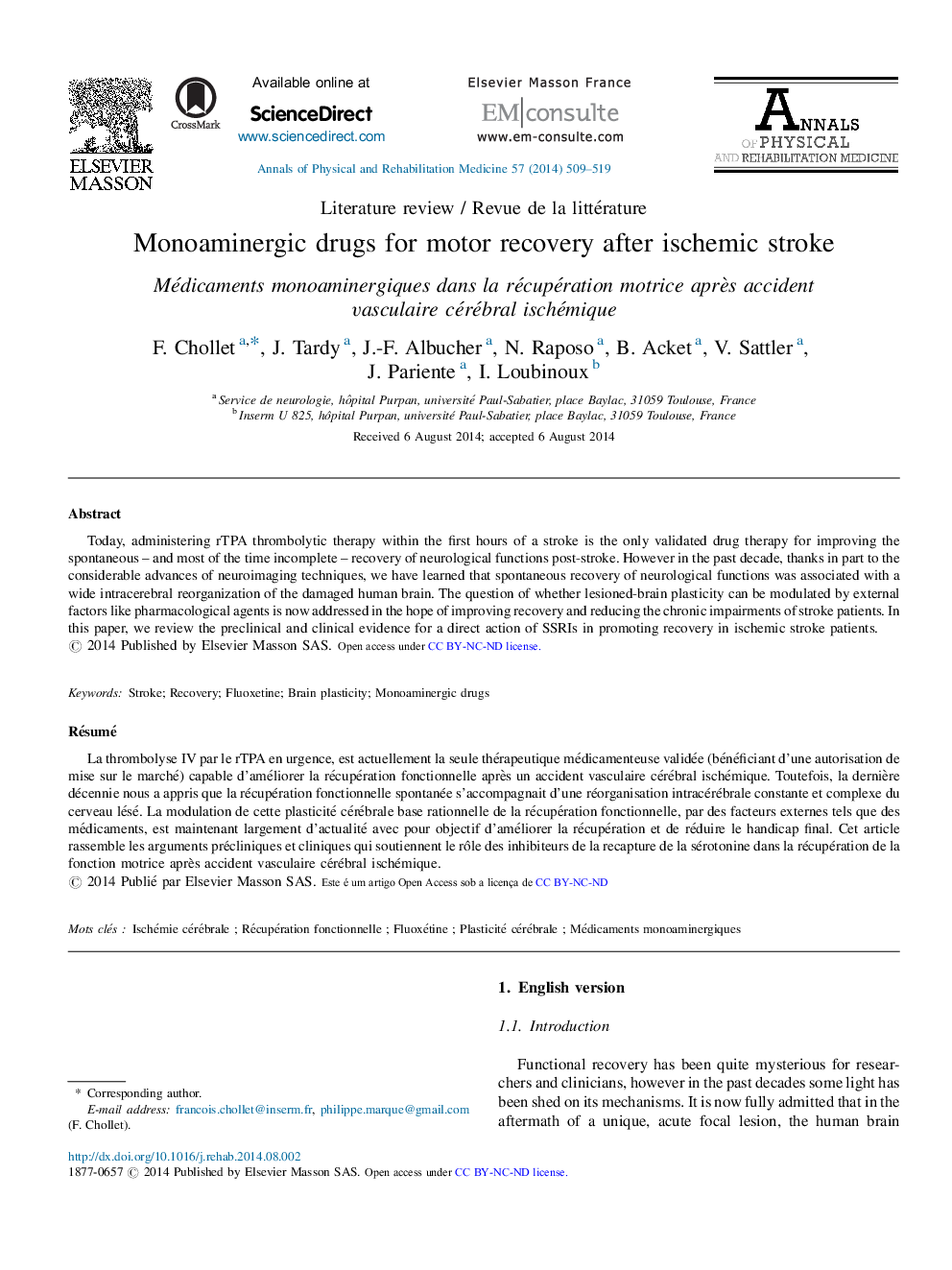| Article ID | Journal | Published Year | Pages | File Type |
|---|---|---|---|---|
| 6204003 | Annals of Physical and Rehabilitation Medicine | 2014 | 11 Pages |
Today, administering rTPA thrombolytic therapy within the first hours of a stroke is the only validated drug therapy for improving the spontaneous - and most of the time incomplete - recovery of neurological functions post-stroke. However in the past decade, thanks in part to the considerable advances of neuroimaging techniques, we have learned that spontaneous recovery of neurological functions was associated with a wide intracerebral reorganization of the damaged human brain. The question of whether lesioned-brain plasticity can be modulated by external factors like pharmacological agents is now addressed in the hope of improving recovery and reducing the chronic impairments of stroke patients. In this paper, we review the preclinical and clinical evidence for a direct action of SSRIs in promoting recovery in ischemic stroke patients.
RésuméLa thrombolyse IV par le rTPA en urgence, est actuellement la seule thérapeutique médicamenteuse validée (bénéficiant d'une autorisation de mise sur le marché) capable d'améliorer la récupération fonctionnelle après un accident vasculaire cérébral ischémique. Toutefois, la dernière décennie nous a appris que la récupération fonctionnelle spontanée s'accompagnait d'une réorganisation intracérébrale constante et complexe du cerveau lésé. La modulation de cette plasticité cérébrale base rationnelle de la récupération fonctionnelle, par des facteurs externes tels que des médicaments, est maintenant largement d'actualité avec pour objectif d'améliorer la récupération et de réduire le handicap final. Cet article rassemble les arguments précliniques et cliniques qui soutiennent le rôle des inhibiteurs de la recapture de la sérotonine dans la récupération de la fonction motrice après accident vasculaire cérébral ischémique.
